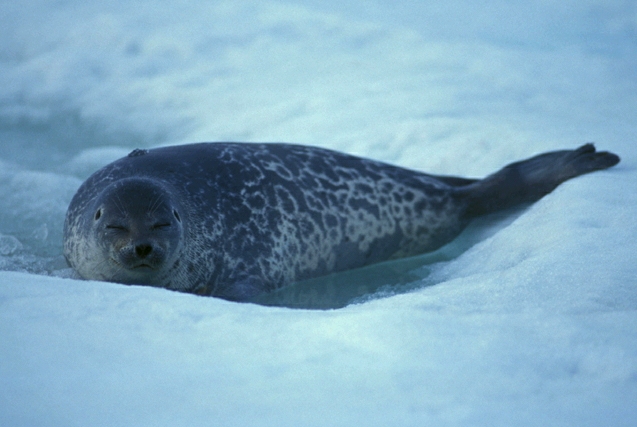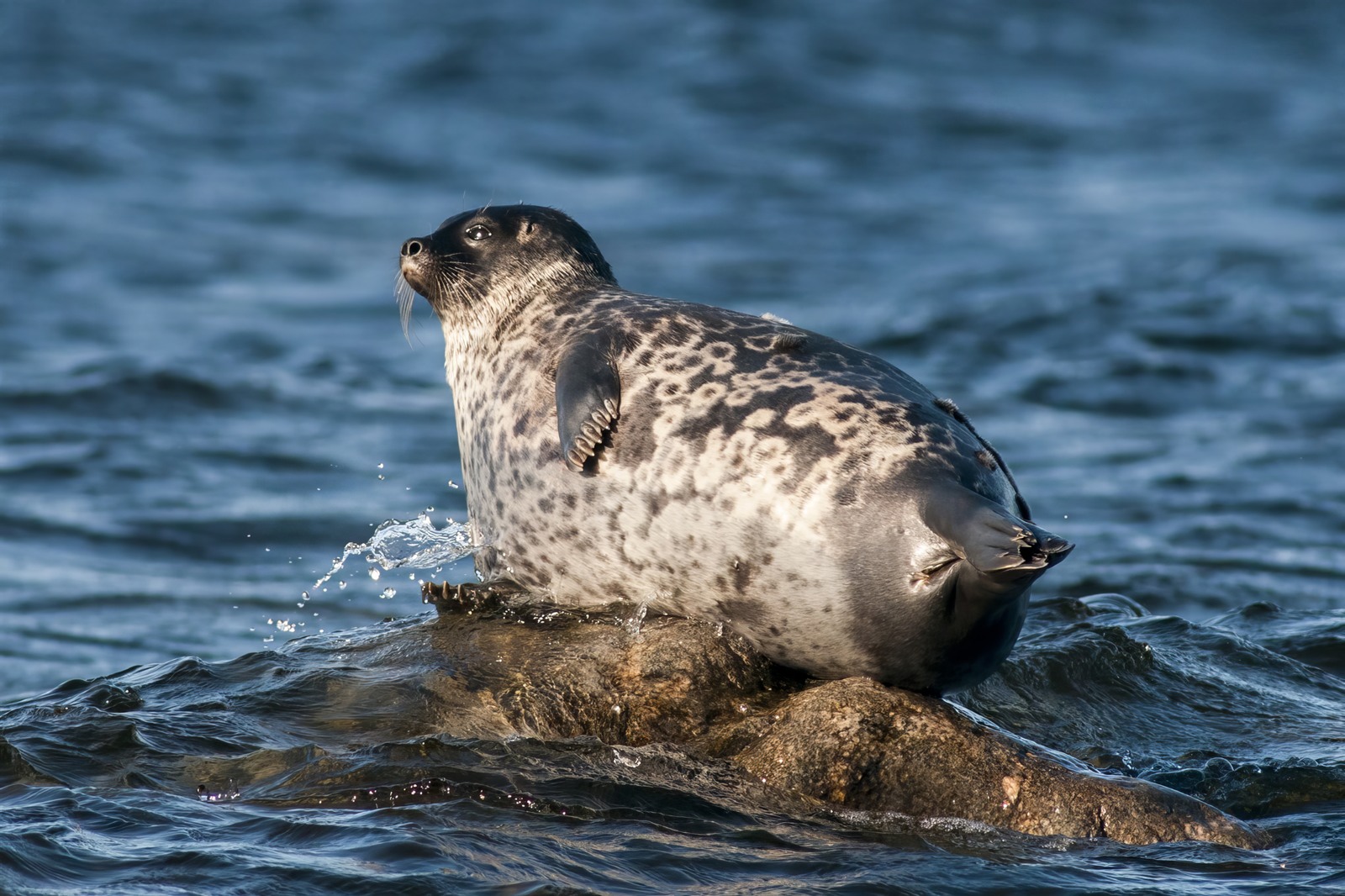Ringed Seal (Vikare)


Characteristics:
The ringed seal is the smallest of Sweden’s seal species. Body length 1.2–1.6 meters, weight 50–90 kg. It has a compact, rounded body, small head, and short snout. The fur is dark grey to brownish-grey with light circular rings, which give the species its name. Pups, called “kutar” in Swedish, are born with a white lanugo coat that is shed after about three weeks.
Habitat:
The ringed seal is the only seal species in Sweden that lives year-round in freshwater. It inhabits the Bothnian Bay in the northern Baltic Sea, where it is dependent on ice for resting and breeding. It also occurs in Lake Ladoga, Lake Saimaa, and the Gulf of Finland in Russia and Finland. During winter, it spends most of its time on ice floes or under snowdrifts.
Behaviour:
Ringed seals are solitary and shy. They spend most of their lives in the water but come up onto ice to rest, moult, and give birth. In winter, they dig snow lairs on the ice to protect themselves and their pups from predators and harsh weather. They are skilled divers, capable of staying underwater for up to 20 minutes and reaching depths of over 100 meters.
Diet:
The ringed seal is carnivorous, feeding mainly on small fish such as vendace, herring, and smelt, as well as crustaceans and molluscs.
Reproduction:
Mating occurs in March–April, and after delayed implantation (diapause), one pup is born in February–March. The female gives birth in a snow lair on the ice, where she nurses the pup for 3–4 weeks before the ice melts.
Tracks and signs:
- Snow lairs: Small caves or mounds on ice used as birthing sites.
- Breathing holes: Round openings in the ice, about 20–30 cm in diameter.
- Droppings (scat): Black, often containing fish remains, found near breathing holes.
- Pup tracks: Small drag marks on the ice near snow lairs.
Distribution:
The ringed seal lives in the Bothnian Bay (northern Baltic Sea) and in some lakes in Finland and Russia. In Sweden, there are about 10,000 individuals, and the population is stable but vulnerable. Because the species depends on thick ice and snow for breeding, climate change and mild winters pose a serious threat to its survival.
Hunting:
The ringed seal is protected in Sweden, and hunting is prohibited. It is safeguarded under national and international conservation laws, including the EU Habitats Directive. Only licensed research permits may allow tagging or sampling.
Firearm class (Sweden):
No hunting permitted. (In the case of emergency culling or euthanasia of injured individuals, a class 2 rifle would be required.)
Think for the hunting exam:
- Smallest seal species in Sweden.
- Lives year-round in the Bothnian Bay (ice-dependent).
- Recognised by light ring patterns on dark fur.
- Gives birth to one pup in a snow lair on the ice.
- Eats small fish such as vendace and herring.
- Protected species – no hunting allowed.
